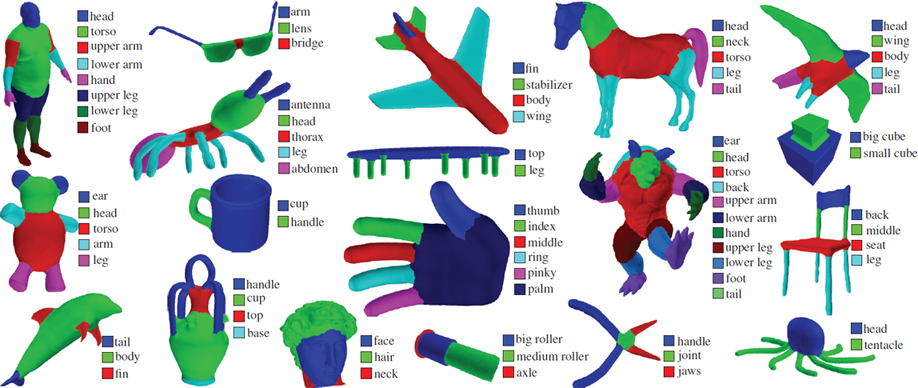CMPSCI 791SU seminar:
Machine Learning for Shape Understanding

Time: Monday, 3:30-5:30pm
Location: 140 CS Bldg
Instuctor: Evangelos Kalogerakis (kalo AT cs DOT umass DOT edu)
Office hours: Thursday 2-3pm, office CS250; at other times, drop in or make an appointment
Course Description
The emergence of modern geometry acquisition devices, such as the Kinect, and the appearance of large-scale shape repositories, such as the Google Warehouse, are revolutionizing computer graphics, making three-dimensional content ubiquitous. The need for algorithms that understand and intelligently process 3D shapes is thus greater than ever. This seminar will provide a state-of-the-art overview of the field with particular emphasis on machine learning algorithms for shape understanding. The seminar will cover topics such as extraction of 3D geometric descriptors and symmetries from shapes, probabilistic models for shape segmentation, retrieval, and reconstruction, 3D template fitting, discovery of structural and contextual relationships of shapes in scenes, generative models of shapes, and applications to 3D modeling. Students read, present and critique state-of-the-art research papers on the above topics and learn how machine learning can be used for shape analysis and synthesis.
The seminar gives 3 credits. The first meeting is on September 10th.
Requirements
Reaction Reports
For each class marked "Paper presentations and discussion" on the calendar, you should write up a one page "reaction" to one of the papers that is to be discussed that day. The first half of the report should contain discussion of one thing you liked or disliked about the paper. The second half should suggest an idea for "future work:" a possible extension or improvement to the paper. You do not need to write a report for days in which you present a paper.
Presentations
Research paper presentations should be 20 minutes at most. The purpose of the presentation is to provide a starting point for questions and discussion. Math should be written on the board.
Marking scheme
Term project: 50%
Class presentations and participation: 30%
Reaction Reports: 20%
Prerequisites
Familiarity with probability, statistics, and linear algebra is required. Experience with vision, graphics, or machine learning useful but not required.
Books
Daphne Koller and Nir Friedman, Probabilistic Graphical Models.
Christopher M. Bishop, Pattern Recognition and Machine Learning.
back to Evangelos Kalogerakis' page